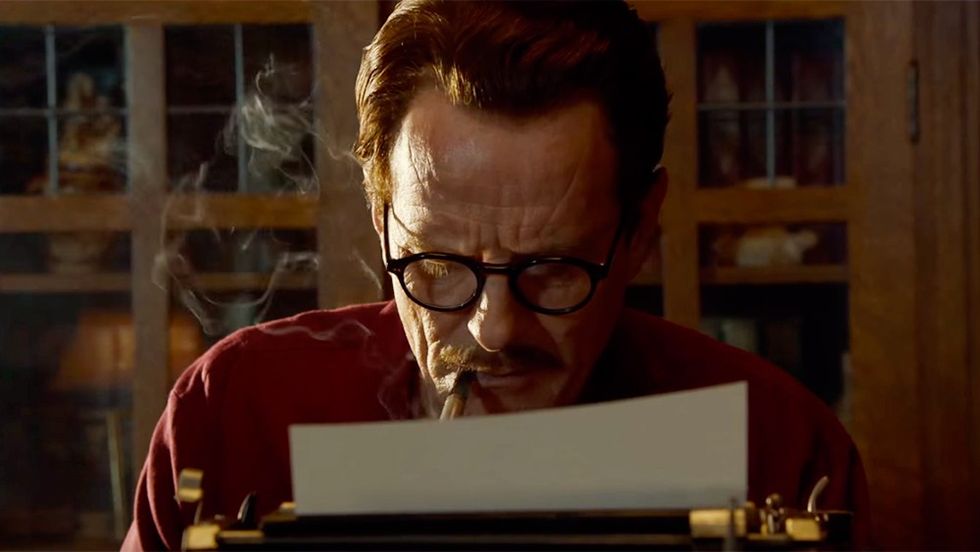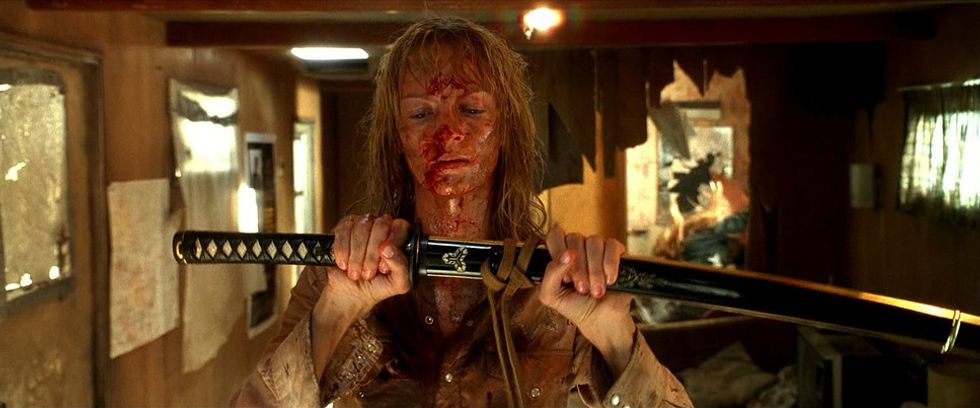Rethinking the Value of the Short Film: an Open Letter to Vimeo by Robin Schmidt

"Do short films have monetary value?" Filmmaker Robin Schmidt, who after many short films and music videos recently completed his first feature film, digs in and offers some intriguing observations in the guest post below, as well as his idea for a solution with the help of Vimeo. After reading the post, we'd also like to know what you think. Do short films have monetary value? If so, what solutions can you come up with that will allow filmmakers to monetize their shorts?
This is a guest post by filmmaker Robin Schmidt.
Health of Cinema as an Art Form
Today we’re seeing a huge debate going about the health of cinema as an art form. Many say it’s dying, others see television as the new frontier of great dramatic art. Alec Baldwin’s made a documentary about it. There’s no doubt we’re in a period of great evolution, of great opportunity and, yes, of great confusion - too much, too often, too much of the time.
The feature film industry is a giant behemoth. It will take some giant efforts to change it. But I’ve recently been wondering whether we can support and underpin the efforts of those at that level by rethinking the short form landscape. This letter is an attempt to understand the shape of the market right now and offer up one possible way to create a system that benefits everyone: the money man, the audience, the filmmaker and a new category that we’ve never seen before in our industry, the collector.
Over the past few years I’ve been following people like Ted Hope, Sheri Candler and Jon Reiss whose staunch advocacy of the power of direct distribution fired my imagination and got me thinking about innovative ways to promote and distribute my own work. I kept coming up against the same problem though. Apathy.
Direct distribution is fantastic when it works, but it often feels as if we have to shout like deranged evangelical nuts just to be heard. It also struck me that these new methods of distribution were more often than not just different ways of presenting the same mechanic: the audience as consumer (albeit invested and interested,) the filmmaker as supplier. And that’s it. Could we perhaps investigate a model of distribution that redrew that relationship?
One of the skills required of any director is an acute point of view on human nature. My own view is distinctly colored by the perception of man as fundamentally selfish – What’s in it for me? Much direct distribution these days depends on altruism, generosity and other acts of selflessness, so I wondered if perhaps we were looking at things the wrong way. Instead of relying on the charity of our end consumer, could we motivate them in ways that actively encouraged their selfishness? By doing so it seemed we might create a fascinating dynamic between filmmaker and audience, a partnership based on mutual self-interest.
New Model for Short Form Content
What I’m proposing is a new model for short form content because that’s where I see the biggest opportunity. That’s not to say it couldn’t work for features but why not start small and build up? I often hear people talk about making the ‘jump’ to features. Should it not be more of a gentle hop? Shorts are a terribly undervalued and often scorned satellite of the filmmaking universe: just a stepping stone, a calling card, a 48-hour challenge. There are some absolutely phenomenal shorts, but very few see them and they’re lost in the back catalogue of careers that reach for something greater. That’s a shame.
As I see it, shorts must overcome three significant hurdles: curatorship, a lack of interest from the general public, and massive competition from all other media. So what’s to be done? Well, let me tell you about myself for a moment.
I’m an independent filmmaker and shot my first feature film, AfterDeath, earlier in the year with long time co-director, Gez Medinger. We shot the film for a low budget on a tight schedule and while it’s entirely possible to shoot ten pages in one day, it does seriously limit how complex you can be with your shot design and coverage.
So I wrote a short martial arts love story that I managed to partly fund with a record label, making up the rest myself. That film became a repository for all the creative ideas that couldn’t be put into the feature film. It’s also 40 mins long. That’s long for a short. Really long. The feature film has commercial value. The short has none at all. Were it 20 minutes longer it would qualify as a feature. And that really sucks.
This of course is entirely my own fault. Nobody makes shorts of that length because it’s just stupid. No one’s going to watch it online, I can’t sell it to television stations and its worth as a calling card would have been undiminished had it merely been ten minutes long. It was a stupid film to make yet make it I did, because, yeah -- okay, I was passionate about it, that’s fine, but most of all, because I was having so much fun making it, it kept paying back all that effort in what was being created.

One idea I’ve had is to retell the story as a graphic novel, sell it to a publisher and package the film with it. The material in my story would work well in that medium, but that isn’t the same for every film. And of course it’s a whole different piece of work with a whole new set of challenges.
What about those films whose content isn’t suitable for this kind of cross-platform approach? Where’s the value in those films? What most people do is publish them on Vimeo, hoping to connect with a broad audience. Many do of course and that’s fantastic, but that’s where it usually ends. The Staff Picks are a great way of sifting through all the material released out there. Tip Jar and the pay-to-view system is an easily graspable way for filmmakers to generate revenue, small as it might be.
Which is great, but we’re still playing the old game, aren’t we? Could there be another way of thinking about things? It starts with the notion of value. What is our work worth? And by that I don’t necessarily mean pounds, dollars or renminbi.
I’ve heard many arguments over the years extolling great ways to monetize short films. But no one wants to pay to watch short films. I have to ask myself honestly whether I would donate money through the Tip Jar on Vimeo or not and the answer is no. I’ve funded many crowdsourcing campaigns, but I don’t feel moved to donate to a finished project. The value proposition is all wrong for a selfish consumer – What’s in it for me?
Making films costs money and it’s taken as read that we must simply be happy to fund them ourselves at this level, or if we’re really lucky, get them funded by a scheme, most of which none of us will ever qualify for. So, what then is the value of a short? Learning your craft, as a calling card and -- well that’s kind of it. Many no longer bother with the festival circuit because it’s just too much of a faff; it’s expensive and it’s the slowest process since glacial erosion. Which is a shame because festivals still represent the best way for any filmmaker to really assert their credentials.
Are Short Films Worth Anything?
Shorts then are fast becoming worthless. Most filmmakers are dispensing with them completely and jumping straight into features and who can blame them?

Most importantly, what is the value of a short, and where might it reside?
It’s no secret that filmmaking is undergoing a heavy process of commoditization. More and more video being made cheaper and cheaper. It was inevitable. There are two models, a services driven one and a talent driven one. There are very few of us, I suspect, who entered this industry to be part of the services driven model, but inevitably that’s where most of us earn our living. Very few actually make it up to features where the tariff for a talent driven model is so very, very high.
Talent is where the value actually lies. It can’t be pirated and it’s very receptive to development. Maybe our model for value lies not with the product but with the producer. If we revisit that idea of commoditization once again, the very definition of a commodity is that the market treats its instances as equivalent or nearly so with no regard to who produced them. This is no good for us.
Ted Sarandos of Netflix recently spoke about TV as the great bold frontier for independent production. They’re doing amazing work revitalizing a tired distribution model, shaping it around the way people consume media and are seeing great results, but it can be every bit as difficult breaking into the television club as it is to break into the feature club, if not more so. Sarandos bases his argument around the notion that people want to watch what they want, when they want. And he’s right. But he’s right for the particular way his audience consume his product. But audiences are like all consumers, they’re fractal.
Way back when I worked for a qualitative market researcher named Wendy Gordon whose book Good Thinking posited the idea of NeedStates in consumers. These were triggers for human behaviour based on not just market segmentation, but time of day, place, and a whole host of other factors. We may consume all our film and TV through a screen, but the NeedStates involved are very different. Some use TV like radio. Others dim the lights and settle in. Others enjoy having something to look forward to, others need everything now.
The NeedState that wants the whole House of Cards series all at once is not the NeedState we have any chance of competing with. None at all. But the NeedState that spends $15 on a bottle of wine, rather than the usual $5, just for the hell of it, for a treat, because, damnit, you deserve it -- there we might be onto something. It’s important that we recognise that all viewing habits are not at all the same.

My argument is this: by offering everything all the time to our audiences we are simply drowning in the same trend as the big boys with all the money. We can’t possibly hope to compete. If we are to really cut through then maybe we need to be the anti-trend, restricting access, controlling the product, cultivating scarcity. That sounds counter-intuitive does it not?
It’s natural for us all to want the widest audience possible for our films, but that’s unrealistic. What we actually want is the best audience possible. It’s time to stop thinking of our work as a commodity. When we talk about things that are beautiful, hand-crafted, bespoke inevitably we evoke one particular class of product: luxury goods. It’s time we started treating our work with the same respect.
Treating Films Like Fine Art
So let’s move away from film for a moment and examine another world that was once intimately related to ours.
Fine art.
Bear with me because this is going to involve some cringe-making assertions about the artistic value of film, but it’s a necessary evil.
Artists create work, they hold exhibitions, are supported by galleries, bought by collectors and their work is sold at auction as their value rises. Galleries put on special exhibits, they borrow and loan works. Auction houses promote sales, hire experts to evaluate pieces, drive up prices. The value of the art is entirely defined by the market. The tools required to create the work themselves are available to everyone. The value resides with the creator. The market is defined by the desirability of the product. And, of course, it’s driven by scarcity. Young talent is developed and promoted, collectors can take a punt on an early career or simply acquire pieces because they love them on budgets from zero to millions of dollars. It’s beautiful.
Is it crazy to think we might apply this same structure to film work?
Would it be possible for filmmakers to develop relationships with gallery owners, exhibit their work, sell it and drive up their stock and standing in a competitive market to be acquired by collectors?
Yes. I believe it would.
Essentially what you’re looking at is a trading platform in which ‘collectors’ can acquire works by filmmakers, they can exhibit them in virtual galleries, charging access or not, and they can auction them off to other collectors. Trading can be done however the interested parties see fit. It can be for cash, or for other artists work. It’s a free exchange.
It’s in filmmakers interest to create better work to interest heavy-hitting collectors, but you limit the number of collectors they can invite to view their work so the game is as much about creating strong partnerships, patronage if you like, as it is about creating the work. For the savvy there’s a real opportunity to build up strong collections that have genuine value and for the artist there’s a real incentive to improve and not just throw any old crap out there.
Imagine a screening system in which collectors can choose which dates they exhibit their collection to the public, on a first come first serve basis. The day comes, the exhibition opens. You have 24 hours, then the exhibition closes. The collector can choose whether or not to charge an entry fee, but that’s entirely up to them. They can put works on sale and of course they can arrange private screenings at any time for interested parties. This reinstates the much-missed element of scarcity to short form distribution. Scarcity breeds anticipation breeds interest breeds audiences. If we can have whatever we want, whenever we want it, then nothing has any value anymore.
Now imagine all the data such a system could harness. Trackable performance figures, audience figures, the actual value of the filmmaker as indexed against all the others on the site. Upward and downward trajectories, measurable analytics. Kind of like IMDBs starmeter. For an investor this provides a very clear way to understand the career of an artist in a way which should make risks easier to take. For the filmmaker it also provides a great tool to back up festival wins and support an application for funding. And it provides a tangible and measurable reason to actually make better films. And more of them.
Of course it can be a long game, but isn’t that what careers are all about?
Say you bet early on the career of Christopher Nolan and acquired his short film Doodlebug. How much could that now be worth?
What I love about this model is that it encourages strong creative partnerships between those who create and those who consume based on a very real sense of value. It encourages the artist to nurture their body of work, to aspire to the caché of festival wins, to believe in the value of their own stock as filmmakers. That value will create something else of great importance. Competition. And that is something I believe can only improve the quality of work produced.
Piracy and Gamification
So what about the elephant in the room? Piracy. My firm belief is that a tiny barrier to entry like a subscription fee would remove most pirates at the first hurdle. It’s short form content after all and the value inherent in that is not defined by one piece of work but by many. A feature film is one big piece of work for which there is a price to pay. That’s not how this system would work, so why bother? Should someone rip a film and upload it under another name that brings us to another powerful idea from the art world: provenance.
If there’s a digital record of the provenance of the film on the site, complete with all sales, transactions, exhibitions and identity of the original uploader then we can consider the exchange of films in much the same way we consider buying a second-hand car. In other words, do your homework. In fact, without that provenance, a second upload of a film would be worthless. What’s more, any copy of the film outside the ecosystem would also be worth far less than the ‘original’. It’s only within the framework itself that the value has any tangible meaning.
Would we see everyone and his dog submitting films for auction? No. In the art world if a work is submitted to auction and doesn’t sell it’s value goes down. It’s a risk. Similarly, if you make the whole process transparent so that collectors can see who else filmmakers have sent their work to, been rejected and accepted by, again the system polices itself. Filmmakers will have to take risks or play it safe, but limit their actions to safeguard the value of their work. It’s a system that polices itself but it’s also a system that curates itself.
Would we see the rise of the superstar collector? Absolutely. Would we see an emergence of ‘collections’ as status symbols? Absolutely. Would the system be subject to the same fluctuations as any trading system? Absolutely. And that’s why it works. Gamification. Encouraging individuals to be strategic in the way they price, exhibit and drive up the value of their assets is a fundamental dynamic in trading. It’s like Football Manager but the assets are films.
And what about festivals? This can only benefit them. If you drive up the prestige of a festival appearance then it makes the festivals more important. There’s no reason why films can’t appear on the exchange without even being seen by anyone, with their first exhibition offline at a festival before being exhibited in the normal way. Might this represent an entirely different way of handling applications to festivals? Possibly…
There are so many fun and exciting ways this idea could be executed, but for me, one constant would have to be a royalty clause. 5% of all trades, exchanges, sales or exhibition fees to the original owner of the work, in perpetuity. As to who originally owns the work, that’s for producers to deal with. Paperwork will be as important as it has ever been.
The Vimeo Exchange
So, why am I writing to you Vimeo? If anyone were to try to launch this as a startup it would never get off the ground. Vimeo is the place where film artists exhibit their work, the community already exists and most of us already pay a subscription to use the site so we are comfortable with that. The community itself is fantastic, global, supportive and, most importantly, not YouTube. I also know that you care deeply about privacy controls, about helping creators control access to their work and about developing a deeper relationship with us. In other words, you would be the perfect people to launch such a system. You already have the exhibition platform, all it would need is the trading platform. Call it the Vimeo Exchange.
And here’s how I think it might work:
- Every Vimeo subscriber automatically becomes a member of the exchange.
- The exchange looks very much like the current on demand system except there would be more options regarding making offers to buy, ownerships statistics and future exhibitions as well as the option to request a private screening.
- Filmmakers can choose whether to submit a work to the exchange which can then be traded, bought, auctioned, given away, loaned or removed at their discretion.
- Vimeo allocates a limited number of slots for daily exhibitions.
- Collectors can sign up for slots on a first come first serve basis.
- Exhibition spaces can be skinned like Wetransfer + pages and exhibitors can choose to charge or not for entry or even wall off sections of their exhibition for paid entry.
- Filmmakers can contact a limited number of collectors every month with the view to getting them interested in their work.
- Filmmakers will be able to offer private viewings of their work which they can choose whether or not to charge for.
- Films can be traded in any way the owners see fit as long as it is on the exchange, for free, paid or in a swap deal.
- All data about trading will be freely available and transparent.
- Every month filmmakers can submit their work for auction. If the film sells they hand over ownership. If not they retain ownership.
- Daily exhibits will be promoted through an email flash and on the exchange front page.
- Best performing filmmakers and films will win a monthly prize
- The platform will be built on the Vimeo principles of flexibility and simplicity. Manage your collection however you want, charge whatever you want, the strategy and the presentation is entirely up to you.
So, let me leave you with a few final words about why I get so excited about this idea.
- It revitalizes the short form, both in terms of its value to the filmmaker but as a worthwhile form in its own right, rather than the poor cousin of features or television.
- It redraws the relationship between creator and consumer as one of artist, patron and collector. Encouraging partnerships between the two in an environment defined by scarcity.
- It gamifies the distribution process, allowing both filmmaker and audience to ‘play’ the system, the way traders play the stock exchange. This is the fundamental appeal of the whole idea.
- It will create a ‘catalogue’ of short form content, indexed, its provenance clear, with a transparent value chain for investors to scrutinize.
- It is driven by the selfish consumer.
At the end of the day, I am a filmmaker and wish to remain one, but I hope to have fired your imagination with some different ideas. It’s a fun debate and I’ve been sitting on it for a year wondering what to do with it. Ultimately, it felt like the best way forward was to put it out there in public.
Yours sincerely,
Robin Schmidt
Filmmaker
[Apple Accessories image -- Packiii
[Money Camera image -- PetaPixel]
[Skull and Crossbones image -- 3D Video]


















